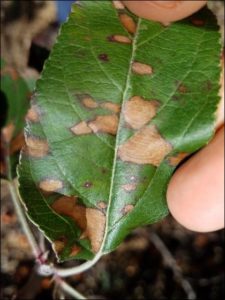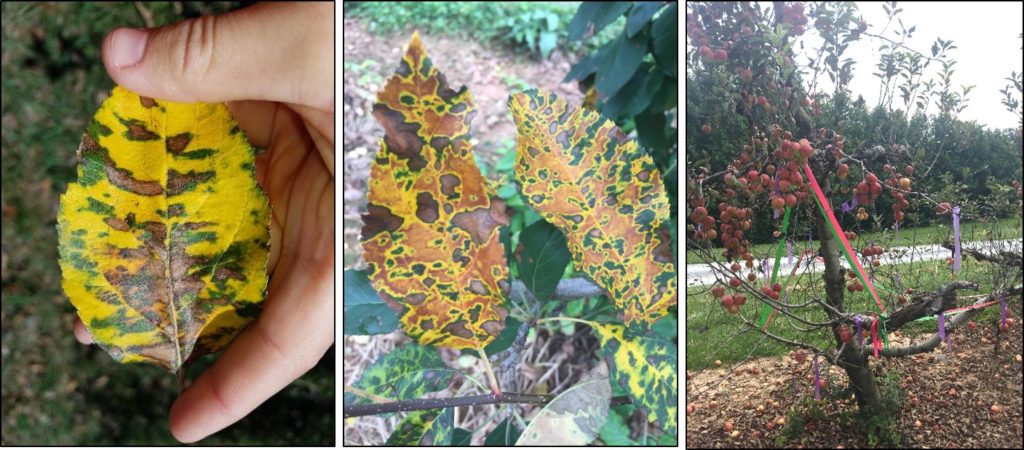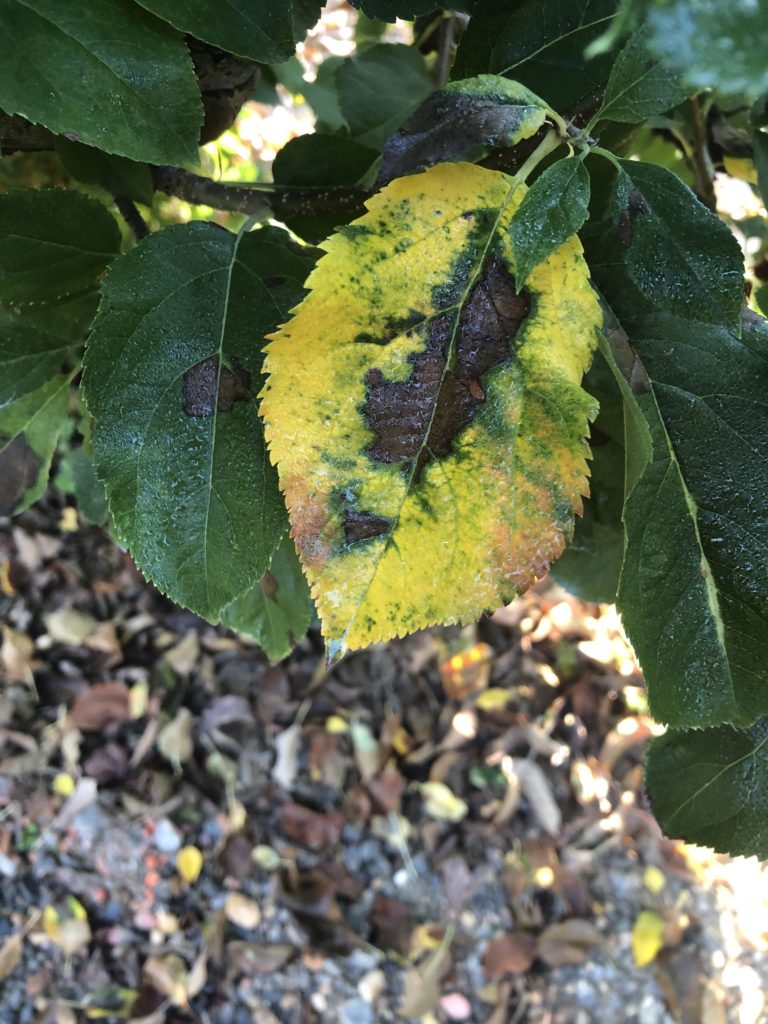Don’t Be Fooled by Nectrotic Leaf Blotch
go.ncsu.edu/readext?623407
en Español / em Português
El inglés es el idioma de control de esta página. En la medida en que haya algún conflicto entre la traducción al inglés y la traducción, el inglés prevalece.
Al hacer clic en el enlace de traducción se activa un servicio de traducción gratuito para convertir la página al español. Al igual que con cualquier traducción por Internet, la conversión no es sensible al contexto y puede que no traduzca el texto en su significado original. NC State Extension no garantiza la exactitud del texto traducido. Por favor, tenga en cuenta que algunas aplicaciones y/o servicios pueden no funcionar como se espera cuando se traducen.
Português
Inglês é o idioma de controle desta página. Na medida que haja algum conflito entre o texto original em Inglês e a tradução, o Inglês prevalece.
Ao clicar no link de tradução, um serviço gratuito de tradução será ativado para converter a página para o Português. Como em qualquer tradução pela internet, a conversão não é sensivel ao contexto e pode não ocorrer a tradução para o significado orginal. O serviço de Extensão da Carolina do Norte (NC State Extension) não garante a exatidão do texto traduzido. Por favor, observe que algumas funções ou serviços podem não funcionar como esperado após a tradução.
English
English is the controlling language of this page. To the extent there is any conflict between the English text and the translation, English controls.
Clicking on the translation link activates a free translation service to convert the page to Spanish. As with any Internet translation, the conversion is not context-sensitive and may not translate the text to its original meaning. NC State Extension does not guarantee the accuracy of the translated text. Please note that some applications and/or services may not function as expected when translated.
Collapse ▲Over the past week I’ve received a few phone calls regarding concern over leaves on Golden Delicious suddenly developing leaf spots/blotches, quickly yellowing, and then prematurely defoliating. Understandably, there was widespread concern that Glomerella leaf spot had appeared in the affected trees just prior to harvest, despite the intensity of fungicide applications throughout the season. Fortunately I do not suspect the symptoms to be caused by a pathogen in this case. Rather Necrotic Leaf Blotch (NLB), a physiological disorder, is most likely the culprit on rapidly defoliating Goldens.
Symptoms of NLB are similar to GLS and often it may be best to look for what is not present (in regards to symptoms) for a proper diagnosis. Here’s a quick comparison:
Cultivar
- GLS: All cultivars with ‘Golden Delicious’ parentage. Severity of symptoms is generally the same across all cultivars
- NLB: Symptoms are usually observed first and are most severe on the ‘Golden Delicious’ cultivar. Symptoms may be observed on other cultivars (particularly those with Golden parentage) but do not tend to be as severe.
*If you have a block (or row) of ‘Golden Delicious’ with leaf spots and premature defoliation and another cultivar susceptible to GLS adjacent to that ‘Golden’ block, take a look at the other cultivar for leaf symptoms. If you’ve sprayed identical fungicide programs in both cultivars, and only the ‘Goldens’ have leaf symptoms, this evidence points more towards NLB than GLS.*
Causal Agent
- GLS: A fungal pathogen: Colletotrichum spp. It is a disease of apple.
- NLB: Cause is unknown but is believed to be associated with a zinc deficiency. It is a physiological disorder of apple.
Leaf Lesion Appearance
- GLS: Symptoms usually begin in early to mid summer as small purple flecks on leaves and rapidly expand into irregular concentric lesions with purple borders. Lesions can be located anywhere on leaves, but are not usually observed on leaf margins or initiating from the leaf mid-vein.

- NLB: Symptoms (see photo above) are most often observed later in the summer and can appear suddenly. I have not observed early “purple fleck” symptoms with NLB. Mature leaf lesions/blotches are in general larger than GLS (though not always the case) and appear more like chemical burn. Lesions lack the concentric ring appearance.
Leaf Appearance
- GLS: Yellowing (chlorosis) appears on heavily infected leaves. GLS lesions are always present on leaves prior to yellowing and defoliation. A relatively gradual progression of symptoms is often observed (purple flecks to concentric lesions to yellow/”leopard spotted” leaves to defoliation). Leaves defoliate from any location within a branch, but premature defoliation tends to initiate in the top and inner canopy. Defoliation can approach 100% in some years.

- NLB: Yellowing (chlorosis) tends to be observed more suddenly and later than GLS and yellowing may occur with minimal blotch (e.g. lesion) severity on leaves. Similar to GLS, premature defoliation occurs, however, defoliation is most apparent on the lower third of shoots. Defoliation usually does not exceed 50% in even the most severe cases.

Fruit Appearance
- GLS: Early fruit infections appear as small indented spots/lesions on fruit. As fruit matures (or after harvest) lesions expand and cause a fruit rot (bitter rot). Under the lesion, a V-shaped pattern can be observed in apple flesh.
- NLB: Fruit are only indirectly affected by NLB. If heavy defoliation occurs near harvest, fruit can become sunburned which may predispose the fruit to rapid rot development.
Environmental Conditions
- GLS: Warm/hot + humid weather.
- NLB: Symptoms most often appear during a period of hot, dry weather that follows a period of humid, rainy weather.
How to Manage?
- GLS: Fungicides: Strobilurin, mancozeb, and/or captan on 7 to 10 day interval beginning at petal fall
- NLB: While not labeled specifically for NLB, trees that have been treated during summer covers with fungicides containing zinc (Zn) ions tend to have less NLB than trees in which Zn-containing fungicides are absent. On Golden Delicious, consider applying ziram occasionally in summer cover sprays. Alternatively, zinc oxide (ZnO) may be effective.




